Walking across the ancient stones of Venice’s Rialto district, I’m struck by how this place has been the beating heart of Venetian commerce for over a thousand years.
The Rialto market, established as early as the 8th century, served as the backbone of both local and international trade that built Venice’s legendary wealth and power. The market stalls I browse today stand on the same spot where merchants have haggled and traded since medieval times.
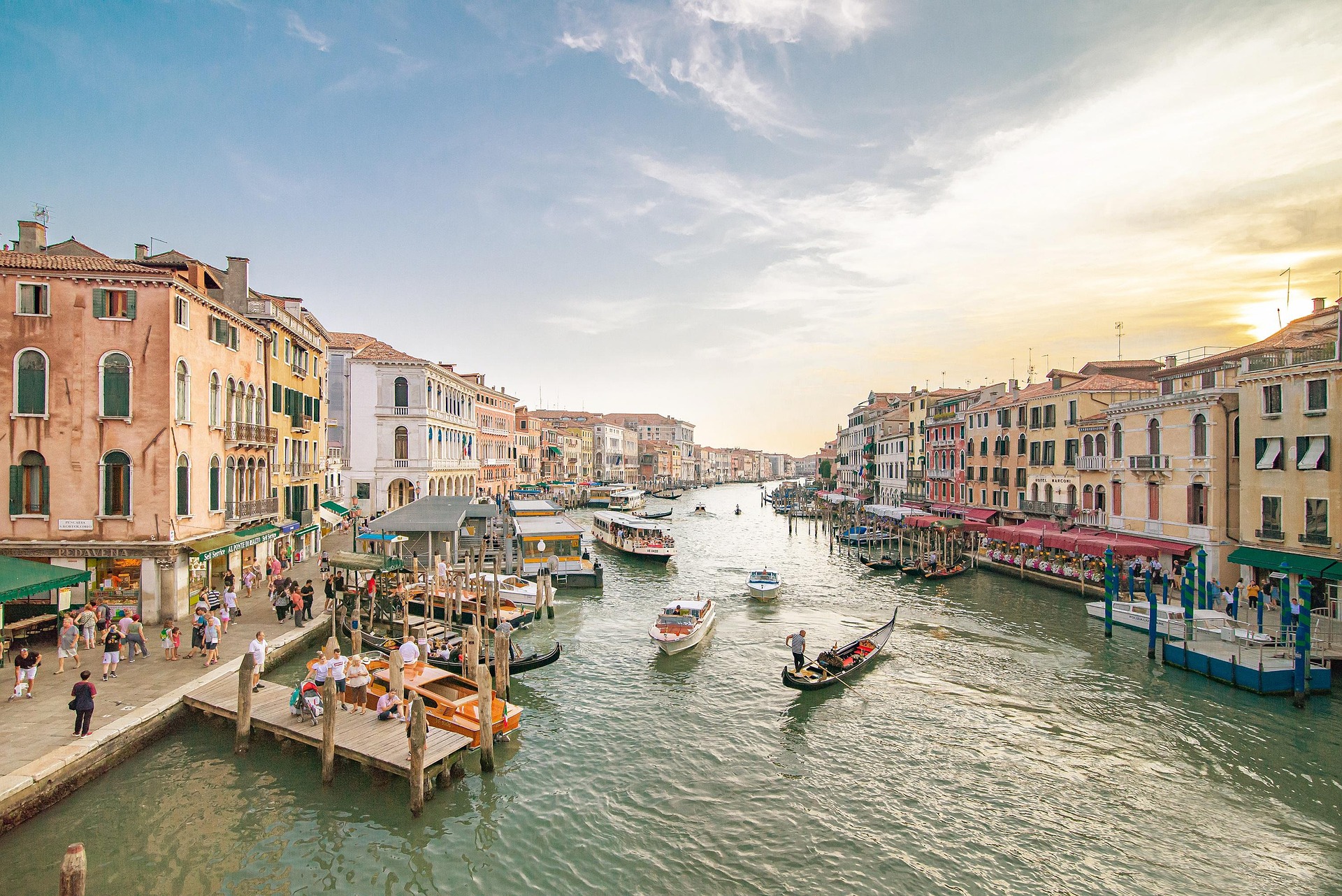
What fascinates me most about this area isn’t just the famous bridge arching over the Grand Canal, but the rich economic history hidden in plain sight.
While tourists snap photos of the iconic Rialto Bridge, few realize they’re standing in what was once the Manhattan of its day – a global financial center where banking systems were pioneered alongside bustling market stalls. The vibrant atmosphere of vendors calling out their fresh catches and produce creates an authentic slice of Venetian daily life that has remained largely unchanged for centuries.
I love spending mornings here watching fishmongers arrange their gleaming seafood with the same pride their predecessors showed hundreds of years ago.
The market area offers more than just shopping – it’s a living museum where you can touch, taste, and experience Venice’s commercial traditions firsthand. The surrounding narrow streets hide charming cafés and shops that invite exploration beyond the main market square, all within view of the Grand Canal’s busy water traffic.
The Evolution of the Rialto Market
The Rialto Market stands as a living testament to Venice’s commercial history, evolving from its early medieval origins to the vibrant marketplace we see today.
From Trade Hub to Tourist Attraction
Walking through the Rialto Market today, I’m always struck by how it connects Venice’s past and present. This market has been the commercial heart of Venice since the 8th century, serving as the backbone of both local and international trade.
The market began to take its current shape in 1097 when two wealthy Venetians, Pietro and Tiso Orio, donated a large plot of land with shops and warehouses to the Republic of Venice. This generous gift helped establish Rialto as the city’s primary trading center.
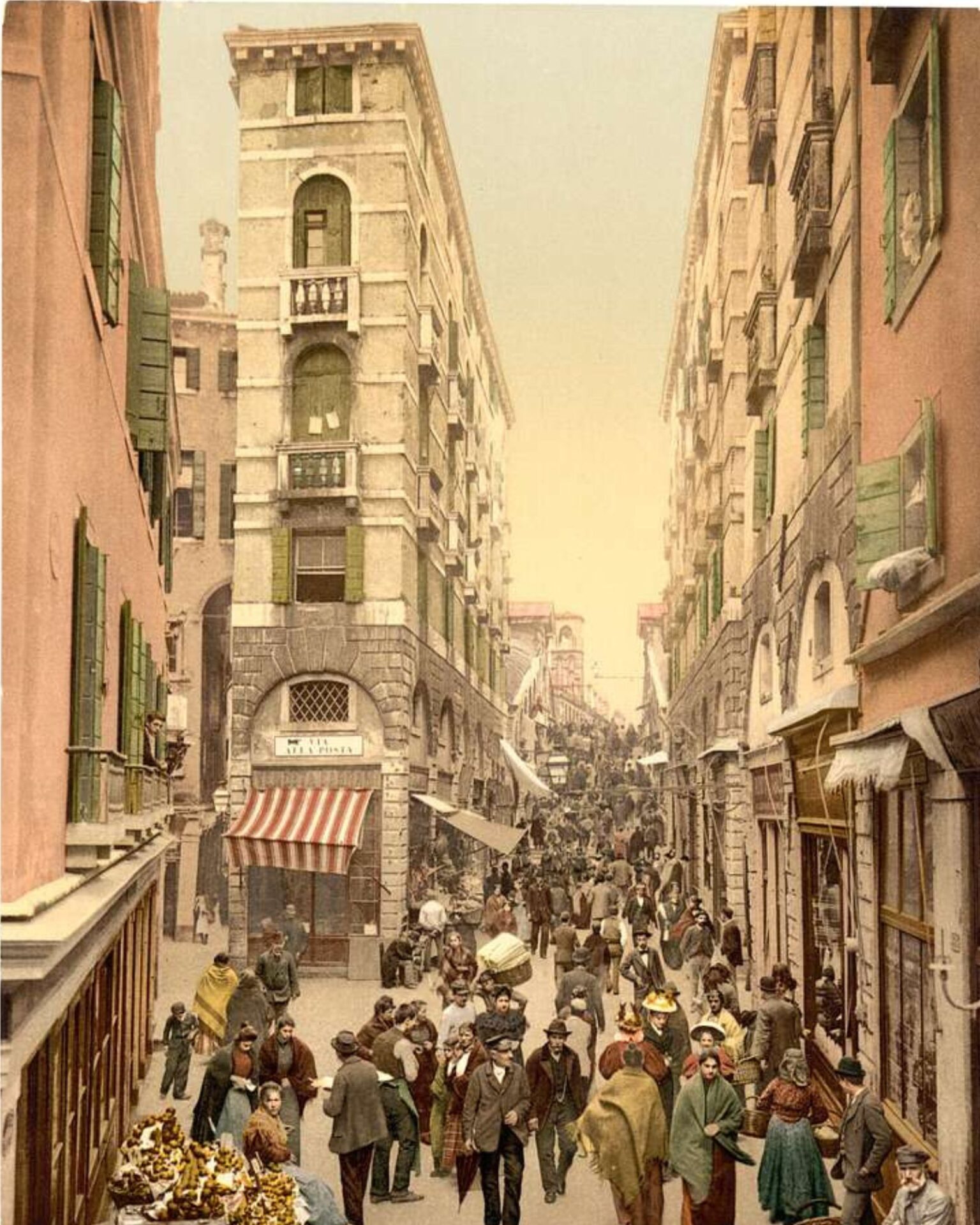
Image Source: ITOLDYA TEST1
As Venice grew into a maritime superpower, the Rialto Market expanded alongside it. Exotic goods from across the Mediterranean and Asia flowed through its stalls, making it one of Europe’s most important commercial centers.
Today, while tourists snap photos, the market still serves its original purpose – local restaurants and residents come here daily for fresh seafood and produce, maintaining its authentic Venetian character.
Restoration Efforts Through the Ages
The Rialto area has survived numerous challenges over the centuries. After devastating fires in the 12th and 16th centuries, Venetians rebuilt the market each time, recognizing its vital importance to the city’s economy.
The most significant restoration came after the 1514 fire, when the market was redesigned with stone buildings to replace wooden structures. This renovation created the architectural framework we still see today.
In recent decades, preservation efforts have focused on balancing tourism with authentic market functions. The historic Pescheria (fish market) building underwent careful restoration in the early 2000s to preserve its distinctive neo-Gothic architecture while improving facilities for vendors.
I’ve noticed that restoration work continues regularly, protecting the market from Venice’s unique environmental challenges like acqua alta (high water) and building settlement. These efforts ensure that the Grand Canal’s oldest marketplace remains both a functioning market and a living museum of Venetian commercial history.
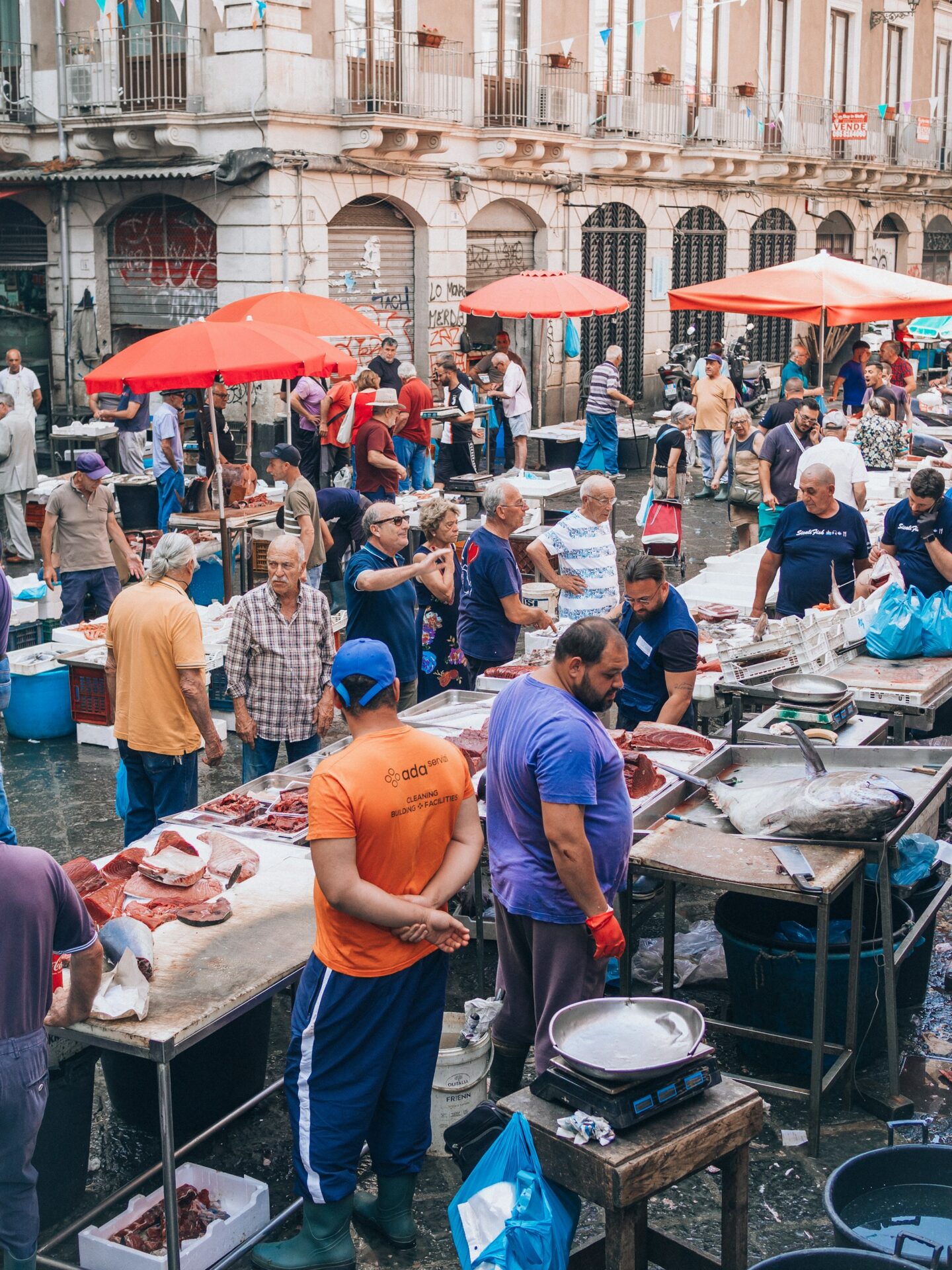
Architectural Wonders Near the Rialto
The Rialto district showcases some of Venice’s most stunning architectural achievements. These structures blend practical function with artistic beauty, telling stories of the city’s rich trading history and cultural influences.
The Rialto Bridge: A Symbol of Venetian Ingenuity
Walking through Venice, I’m always drawn to the magnificent Rialto Bridge arching gracefully over the Grand Canal. This Renaissance masterpiece replaced earlier wooden versions that collapsed under heavy use.
Designed by Antonio da Ponte and completed in 1591, the bridge features a single elegant stone arch spanning the canal’s widest point. I love how the structure combines beauty with practicality – its wide central portico is flanked by rows of shops that have housed merchants for centuries.
The bridge’s 24-foot height allows gondolas and water taxis to pass underneath easily. What impresses me most is how the massive stone structure seems to float effortlessly above the water, supported by 12,000 wooden pilings driven into the canal bed.
Influences and Inspirations from Constantinople
The architecture near the Rialto reveals Venice’s fascinating connection to Constantinople (modern Istanbul). As I explore the district, Byzantine influences are visible everywhere.
The Church of San Giacomo di Rialto, one of Venice’s oldest churches, displays distinctive Byzantine elements in its clock face and rounded arches. Some historians believe it dates back to 421 CE, though the current structure is much newer.
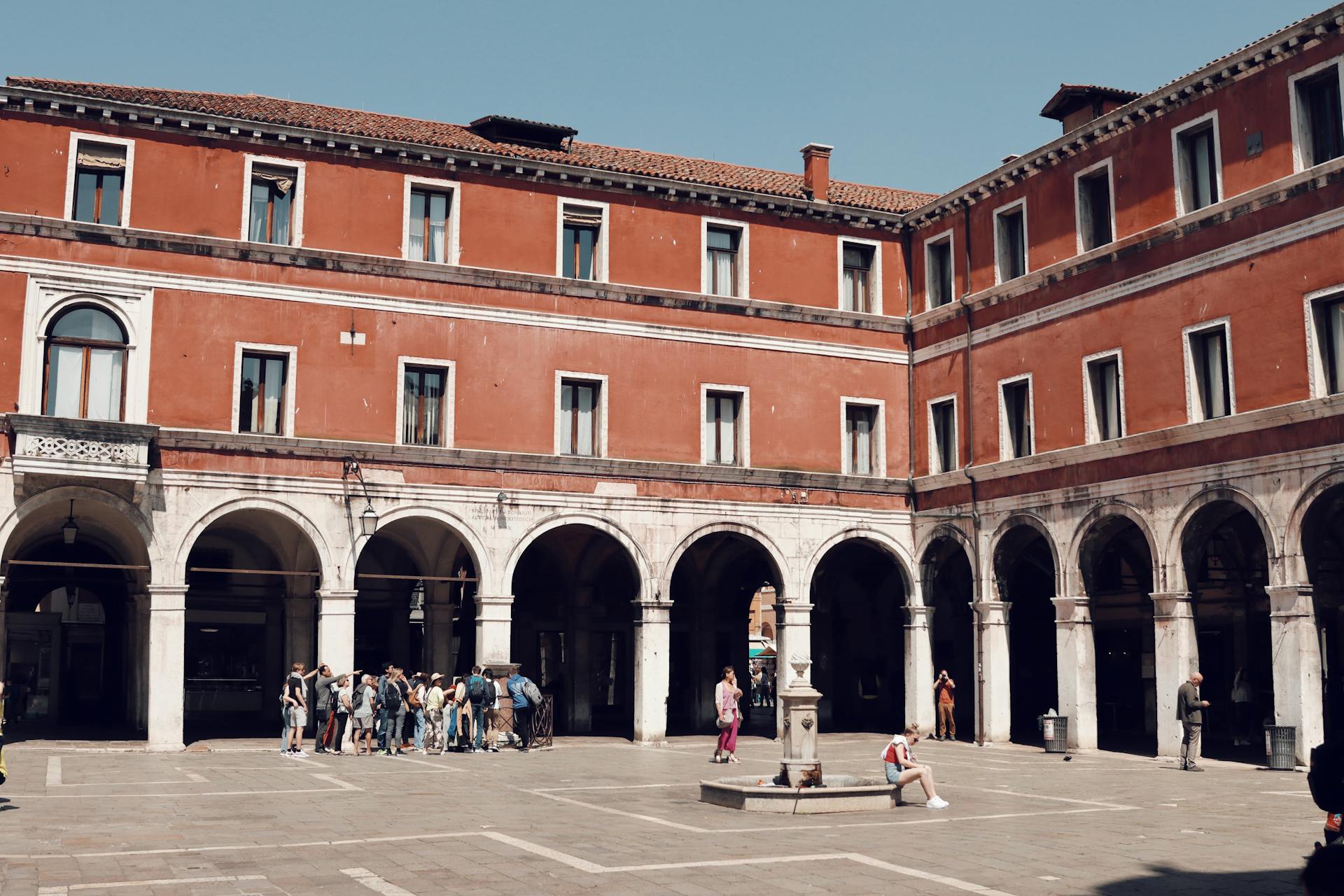
The Fondaco dei Tedeschi nearby shows how Venice absorbed eastern architectural styles. Once a trading post for German merchants, this building combines Venetian Gothic with Byzantine influences. Its inner courtyard reminds me of eastern caravanserais – trading complexes where merchants could store goods safely.
What I find most interesting is how these buildings reflect Venice’s role as a cultural bridge between East and West, blending styles to create something uniquely Venetian.
Society and Life Around the Rialto
The Rialto district has always been more than just a marketplace – it’s a vibrant social hub where Venice’s diverse population converges. Daily life here reflects centuries of Venetian traditions that continue to thrive amid the hustle and bustle of commerce.
The Social Fabric: Gondoliers and Merchants
When I visit the Rialto, I’m always struck by the rich tapestry of people who make up its social fabric. Gondoliers in their striped shirts call out to tourists while navigating the busy canals. These iconic figures aren’t just transportation providers but cultural storytellers who share tales of old Venice.
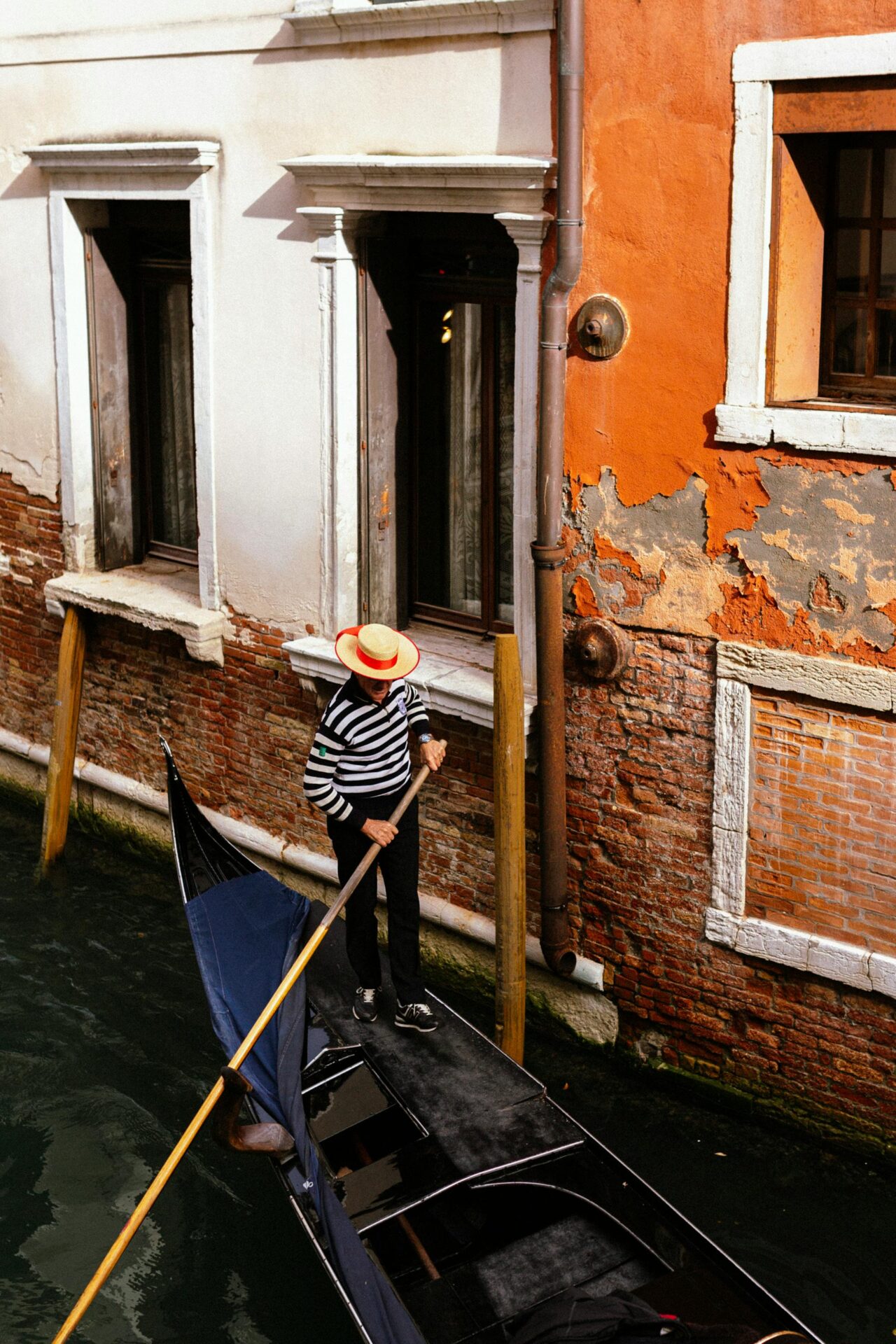
Merchants stand proudly behind their stalls, many following family traditions that go back generations. I’ve chatted with fish sellers whose great-grandparents worked the same market corners.
The banking tradition also remains strong here. Since the Middle Ages, the “Rialto bankers” operated a sophisticated financial system, taking deposits and making transfers for businesses and the public. This early banking system helped fuel Venice’s commercial power.
Daily Rhythms: Marketplace Activities and Incidents
The day at Rialto starts before dawn when boats arrive loaded with fresh produce and seafood. I love watching vendors arrange their colorful displays of fruits, vegetables, and the day’s catch. The market has remained remarkably unchanged since the 8th century, still “extremely lively and colorful, flooded with sounds and fragrances.”
Morning brings the locals who know to shop early for the best selection. By midday, tourists mix with residents, creating a wonderful blend of languages and cultures.
Market incidents are part of daily life too. I’ve witnessed good-natured haggling over prices and occasional disputes between vendors competing for the best spots. These moments offer glimpses into authentic Venetian character.
Special events sometimes transform the marketplace. Festivals bring additional energy as the area becomes decorated and filled with traditional performances that celebrate Venice’s rich history.
Venetian Craftsmanship and Luxury Goods
Venice’s artisanal traditions have flourished for centuries, creating a legacy of exquisite craftsmanship that still thrives today. Walking through the Rialto district, I’ve discovered workshops where ancient techniques meet modern creativity.
The Artistry of Lace and Murano Glass
The delicate beauty of Venetian lace took my breath away when I first saw artisans working their magic with nimble fingers and endless patience. This craft dates back to the 16th century, when noblewomen created intricate patterns that became sought after throughout Europe.
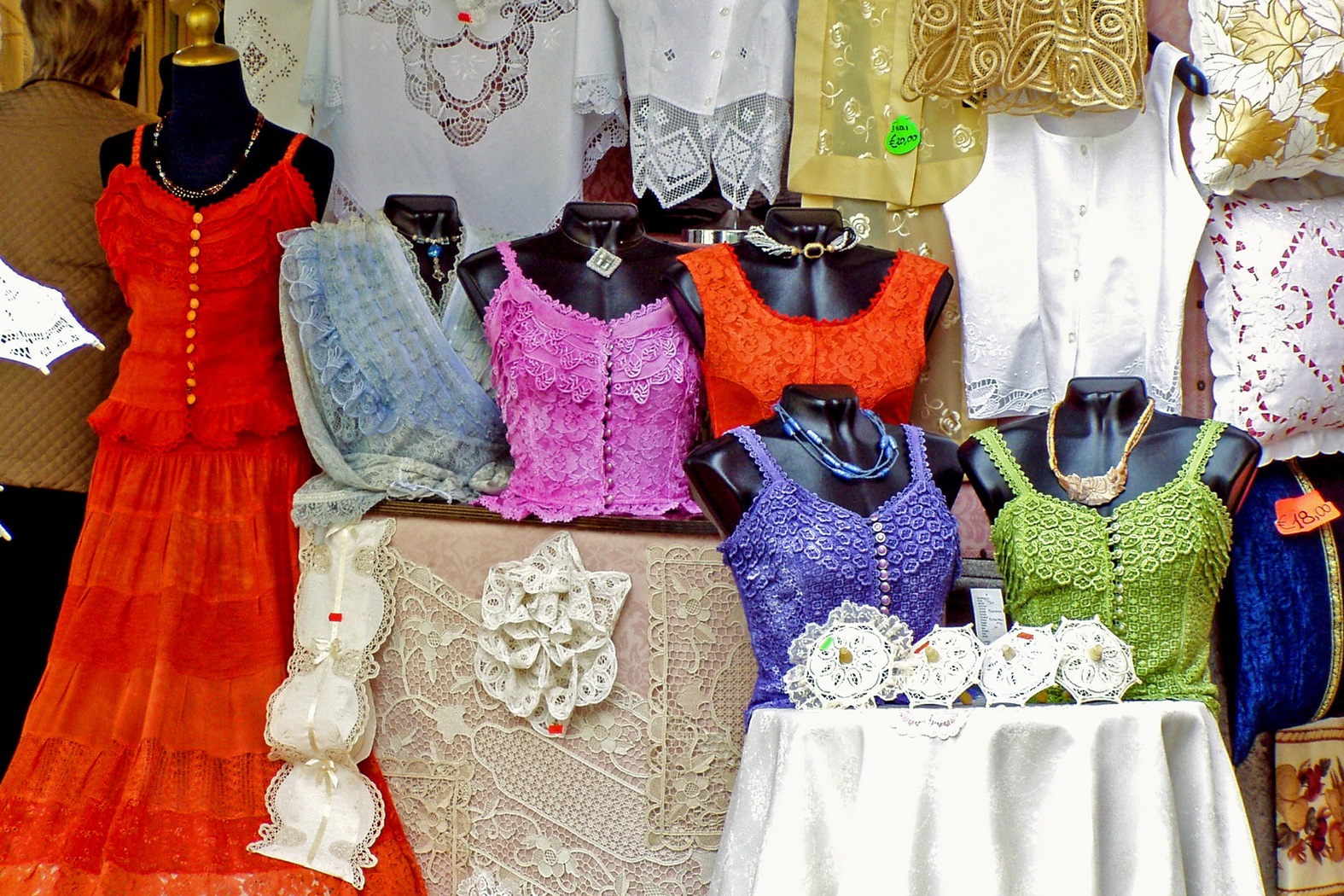
Burano island remains the heart of lace production. I watched in awe as elderly women worked with bobbins, creating delicate patterns that can take months to complete.
Murano glass offers another glimpse into Venice’s artistic soul. On my visit to a local workshop, I saw master glassblowers transform molten glass into stunning works of art. Their techniques, passed down through generations, involve precise timing and practiced movements.
The vibrant colors and intricate designs make each piece unique. From delicate figurines to bold chandeliers, these artisans create treasures that capture Venice’s luminous spirit.
Spices, Pearls, and Gilded Leather: A Shopper’s Heaven
The Rialto market has been a trading hub for exotic goods since medieval times. Walking through its narrow lanes, I caught the fragrant scents of cinnamon, saffron, and cloves – spices that once made Venice wealthy.
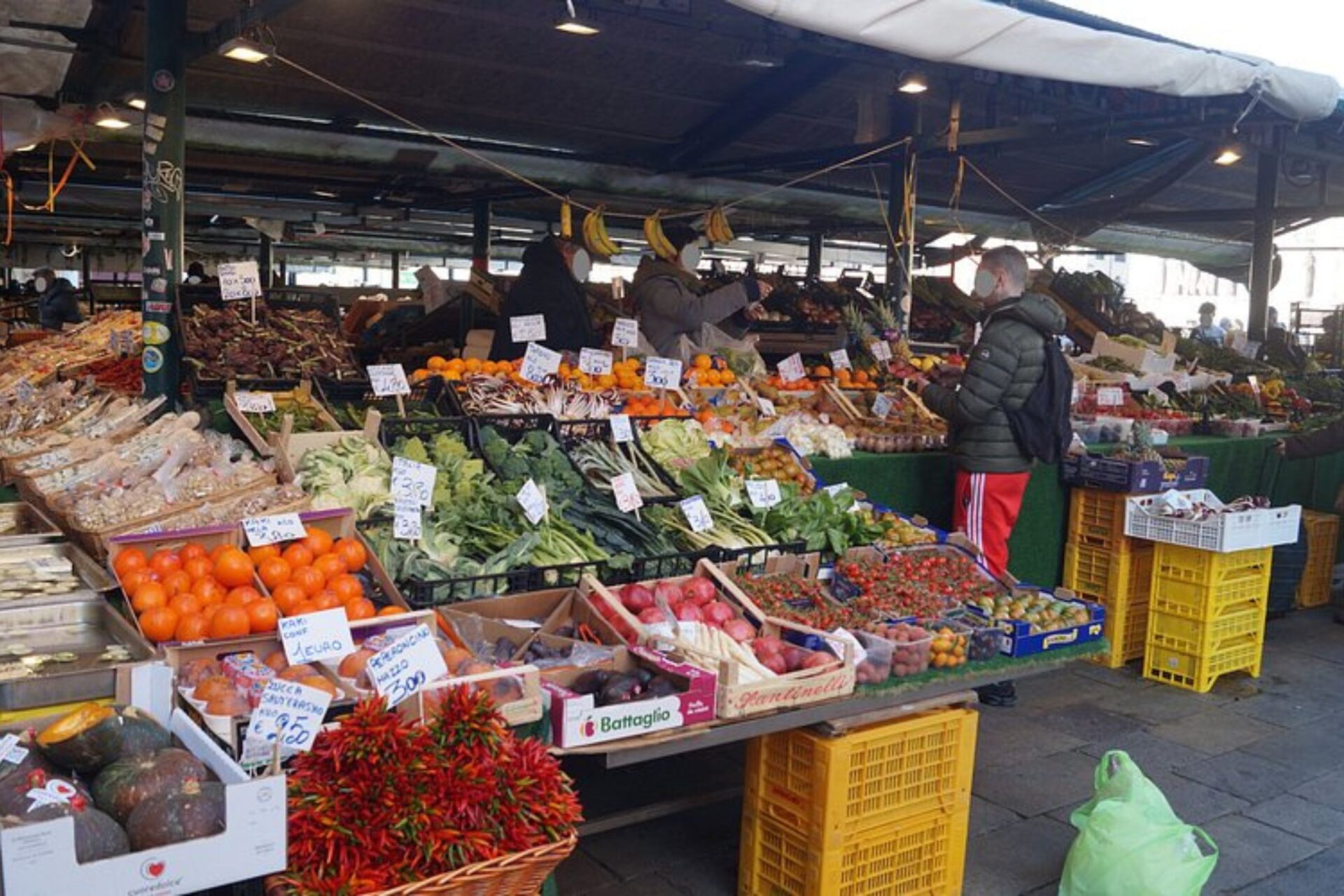
Merchants still display these treasures alongside other luxury goods. I browsed shops selling freshwater pearls from local lagoons, their lustrous surfaces capturing Venice’s unique light.
Traditional Venetian Luxury Items:
- Gilded leather accessories (crafted using ancient techniques)
- Handcrafted pearl jewelry
- Spice blends unique to Venetian cuisine
- Artisanal paper products
Emporio etico, a leather goods workshop I discovered near the Rialto, continues the tradition of gilded leather craftsmanship. Artisans create stunning accessories using techniques dating back to the Renaissance, when Venetian leatherwork was considered the finest in Europe.
Iconic Landmarks and Cultural Monuments
Venice’s Rialto district sits near some of the city’s most treasured landmarks, where history and art merge to create breathtaking experiences for visitors.
Piazza San Marco: The Heart of Venice
I always tell my visitors that no trip to Venice is complete without exploring Piazza San Marco. This magnificent square sits just a short walk from the bustling Rialto Market area.
The piazza is home to St. Mark’s Basilica, with its stunning Byzantine domes and golden mosaics that glitter in the sunlight. I love watching tourists’ faces when they first see these treasures.
The towering Campanile bell tower offers the best views of Venice if you’re willing to climb up. From the top, you can see how the Grand Canal winds through the city, connecting Rialto to other districts.
Nearby, the Bridge of Sighs connects the old prisons to the Doge’s Palace. Legend says prisoners would sigh as they glimpsed their final view of beautiful Venice through the bridge’s windows.
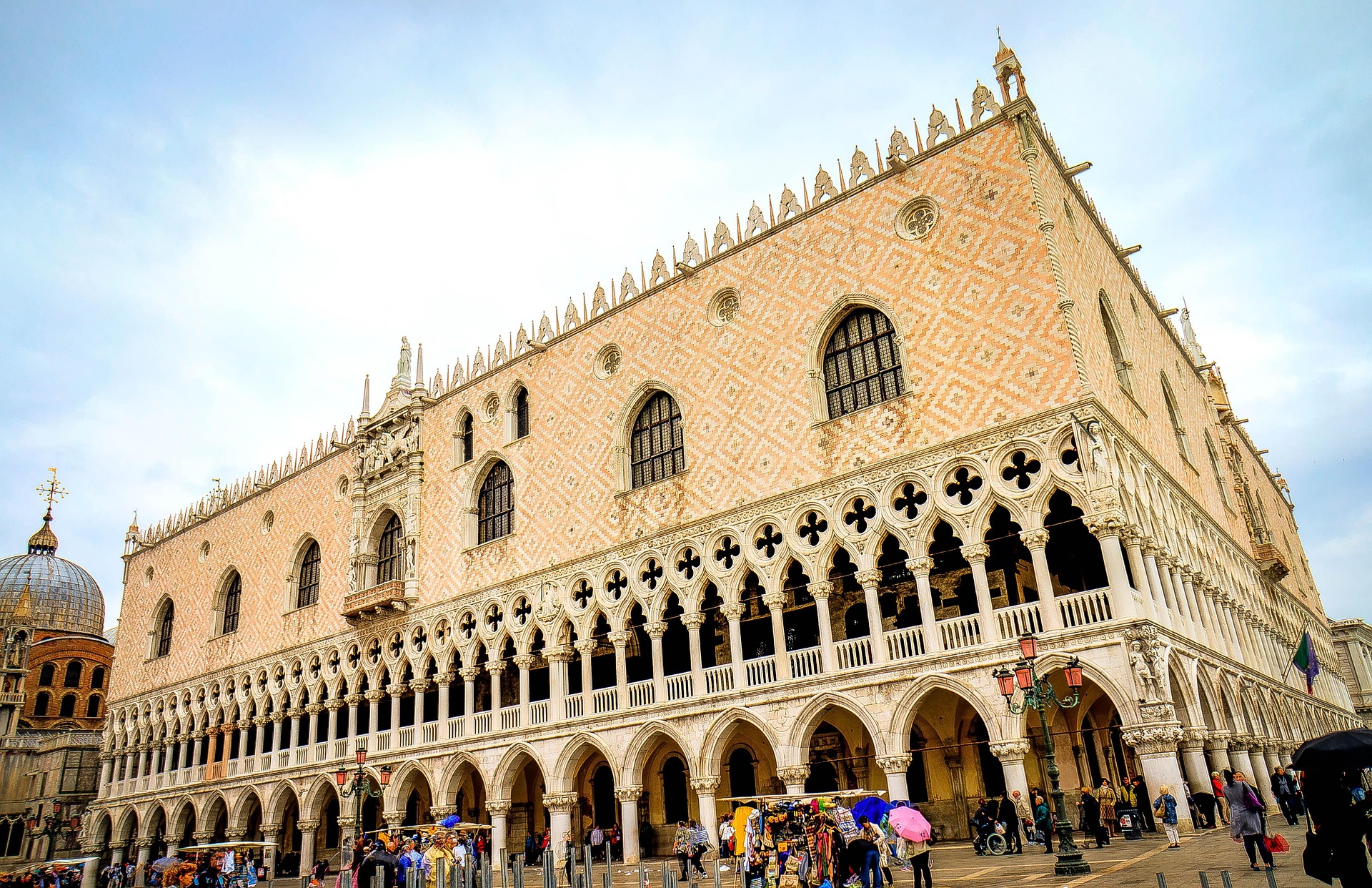
Titian’s Legacy and the Renaissance Influence
Walking from Rialto toward the art districts, I’m always struck by Titian’s influence on Venice’s cultural identity. This Renaissance master lived and worked near Rialto. He painted many works that now hang in the city’s galleries.
The Scuola Grande di San Rocco showcases Tintoretto’s masterpieces, but Titian’s influence is visible throughout Venice’s art scene. His bold use of color transformed Renaissance painting.
Several churches near Rialto display important Renaissance works. I recommend visiting the Church of Santa Maria Gloriosa dei Frari to see Titian’s famous “Assumption” altarpiece.
Venice’s merchants once funded these artistic treasures. They created a unique relationship between commerce and culture. The wealthy traders of Rialto helped make Venice one of the Renaissance’s most important artistic centers.
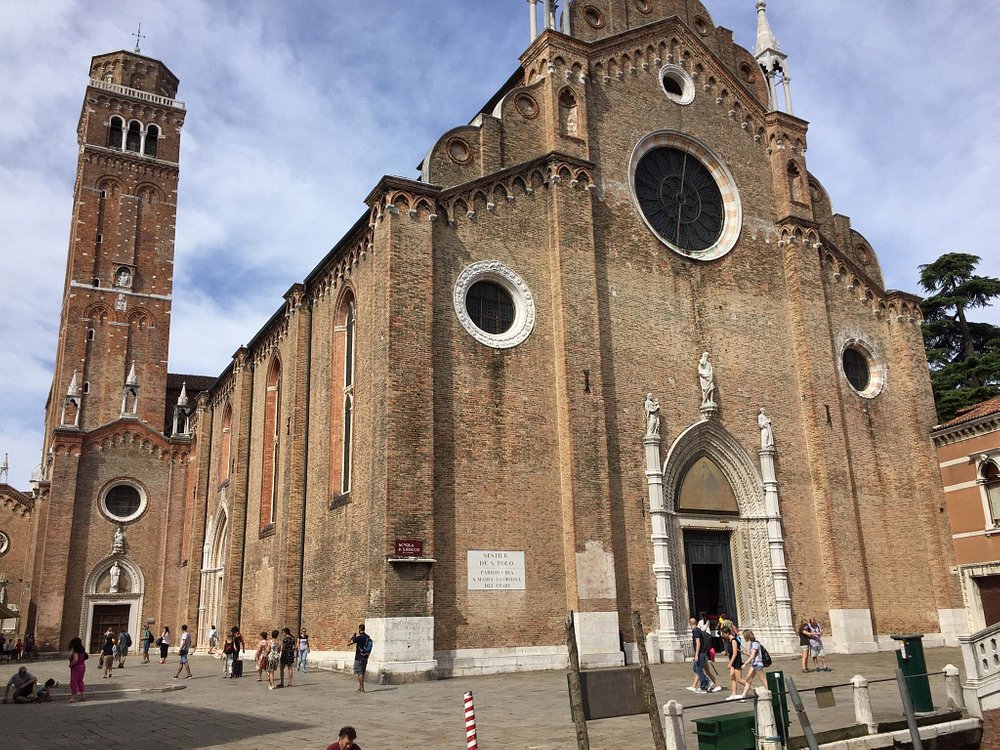
Image Source: Tripadvisor

